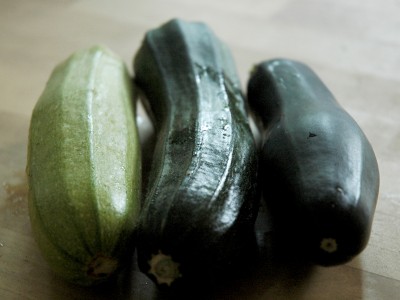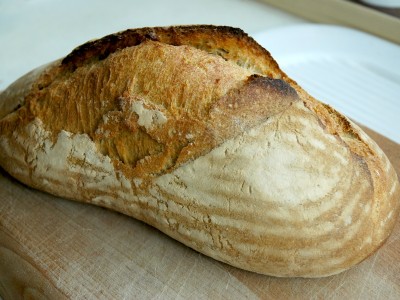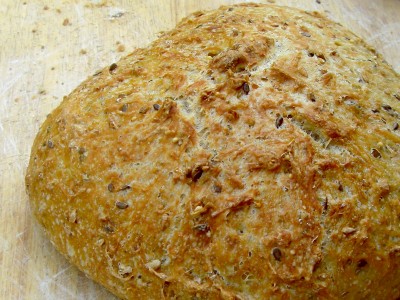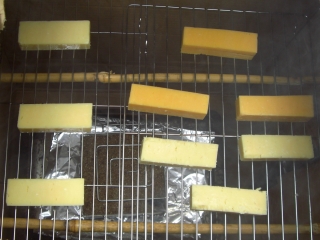How we got 14 meals from our Swillington Farm chicken
We got our first Swillington Farm meat box delivery at the end of June and are determined to do it justice. I’m keeping a lengthy record of what we did with every bit of it – but as we’ve not got through much of it so far, I thought I’d mention this separately – what we did with the chicken.
As part of our “medium” box, we get “1x large organic chicken” each month. By “large”, they mean large – it was considerably bigger than any I’ve seen for sale at supermarkets. According to the Swillington Farm’s website, the birds start indoors but then “spend the next 2 months free range on organic pasture” and “aged at least 3 months before they reach your plate [producing] larger, better tasting chickens than the average supermarket bird” (supermarket chickens are typically 6-9 weeks in age when they’re killed – ie, 1.5-just over 2 months old). Butchered, our Swillington chicken weighed 2.6kg (5lb 12oz), and they included the liver & neck in a little baggie.
How we used it
- 2 portions: Chicken legs (each weighed close to 370g!) roasted with a light garlic, lemon, ground coriander & black pepper marinade. Cooked with roasted new potatoes, and served with purple sprouting broccoli.
- 2 portions: Chicken wings and some meaty bits from the carcass roasted with the same marinade, with leftover roasted potatoes and garlicky broad beans & salad from the garden.
- 4 portions: Chicken & sweetcorn noodle soup made from stock/meat from the carcass/neck.
- 3 portions: Chicken jalfrezi, made with one chicken breast and our eggs.
- 3 portions: Chicken & pepper jalfrezi, made from the other breast and our eggs.
And the cats had the skin & liver cooked up and blended into a “pate” – which they *loved*.
We have … generous appetites so the portions were still quite large – both in the amount of chicken in each portion and the size of the portion. I thought there was enough meat in all the meals – all the meals felt sufficiently chicken-y for me – but John said he’d have liked a better chicken-to-other ratio in the first jalfrezi.
Update – Jan 2013: We’ve had Swillington Farm meat boxes most months since I wrote this post and we’ve always had equally generous chickens – including some even bigger ones at times! 14 meals from a bird is the rule in this house, not the exception – and 16 meals isn’t uncommon. I’ve written a little update here.
What are your favourite ways to get the most out of chickens?
Read MoreThings from the last week
Last week was our “summer showcase” production week at drama, meaning I was there every night, and most afternoons, for either rehearsals or shows. Compared to how unprepared everyone was at the start of the week, they pulled off some great performances on the night/s. I’ve also learnt a lot about what to do, and what not to do, for future years.
That took up a lot of my time – free or otherwise – so I didn’t have time to do much else. I did though have to do some crafty stuff for the show – making props/costumes, including most notably some six-fingered gloves (they looked rather weird!). Drama productions really do draw on a lot of different skills – we didn’t have a lot of costumes/set for these ones but our big shows in April draw on lots of people’s craft skills. If you like sewing or building/painting stuff, and want a new outlet, I’d definitely recommend joining an am dram group.
John did some fab cooking for us to keep me well fed last week, including a lovely lasagne, layered with our homegrown courgettes. Last year showcase-week was the week when all my courgettes grew into marrows without me noticing – this year, I made sure to pick them. We now have a shelf in the fridge full of courgettes and I know there are at least two in the garden that needed picking yesterday. I must make them into ratatouille for the freezer.
After the show finished on Sunday night, I gave myself some playtime on Monday. I made a big batch of pizza base dough – which grew into an insanely big batch in the perfect-rising-temperature porch! – and made lots of bases. As I said on Twitter, my pizza bases don’t usually qualify to be euphemised as even “rustic” in shape so I wanted to try a lot in one go to figure out the best way to do it. By the end of Monday afternoon, I hadn’t perfected it but I feel a lot more confident about shaping them than I did before. I also part-baked all the bases, which seemed to result in a stable-but-very-thin pizza, which made me happy. And we’ve got four part-baked bases (and a couple of batches of dough balls) in the freezer for super quick homemade meals in the future.
On Monday, I also ate some out of date (cured) sausages. I’ve had a long time love of sausages and I thought the feeling was mutual. It was not. Yesterday was a slumped-on-the-sofa and bland food day as a result.
I’m still not feeling perfect today but I thought I should check in. How’ve you been?
Read MoreReal Bread week: our favourite bread recipes
Apparently it’s Real Bread Maker week this week. I’m not sure why it’s not just Real Bread week, why it has to be all about breadmakers but either way, mmm bread.
When I left my last-but-one job I was given a juicer as a leaving present. As I hate juice, I swapped it for a bread maker. We probably made bread in it about a dozen times — admittedly a dozen more times than we would have used the juicer — but not enough to warrant it taking up a whole lot of space in our then-tiny kitchen. We just weren’t impressed with the bread from it – we tried a number of different recipes but none were impressive enough to be worth the effort. A few years ago, we gave the gadget to John’s sister and worked out how to make much better bread without it.
Aside from meal-centric breads like chapattis, naans and pizza dough, we tend to make three types of bread: yeast-based slow rise no knead bread, sourdough and soda bread.
Sourdough
The sourdough is by far the most labour intensive because in addition to the regular bread making stuff, we have to keep our starter alive all the time even though we don’t bake it that often. When we do make it, we use the Handmade Bakery’s “Yorkshire Leaven” and their pain de campagne recipes – the former uses a sourdough “production starter” which is left overnight before the bulk of the flour added, whereas the latter is fully mixed & kneaded then left overnight. The two different options mean we can pick the recipe which suits our schedule better – whether we have more time right then or will have more time the following day. Both result in a really tasty, substantial loaf – not like fluffy barely-there white bread from the supermarket but a real part of a meal.
Pros:
- Really, really tasty bread
- Minimal ingredients – just water, flour, a little salt & starter (which is flour & water with natural yeasts)
- Breads in theory last up to a week. Usually eaten well before that here!
Cons:
- A chore to keep the starter alive if not baked regularly
- Needs to be in a warm place during rise/proving times
- Needs to be started well in advance of eating
Slow rise no knead bread
In comparison to the sourdough, slow rise no knead bread is less flavourful – that’s not to say it’s not tasty in its own right, just it’s not so zingy. The texture is similar though – substantial with large air bubbles; you know you’re eating it, that’s for sure. It needs leaving overnight like the sourdough too but the actual involved-making time is minimal – time does the hard work so you don’t have to ;) It takes less than five minutes to mix the dough then it’s left for 12 hours or so, shaped (which takes no more than a minute), left to prove for a couple of hours then baked. And it uses only store cupboard ingredients – no pesky, needy starters. I’m willing to trade the sourdough zing for the easiness of this recipe most of the time. [Our slow rise no knead bread recipe]
Pros:
- Substantial, tasty bread
- Minimal ingredients – just water, flour, a little salt & yeast
- Takes less than five minutes to mix – no kneading! Then just a little shaping the next day before baking
- Breads in theory last up to a week. Usually eaten well before that here!
Cons:
- Needs to be started well in advance of eating
- Needs to be in a warm place during rise/proving times
- Best results using a cast iron casserole dish – can be expensive if you don’t have one
Super quick soda bread
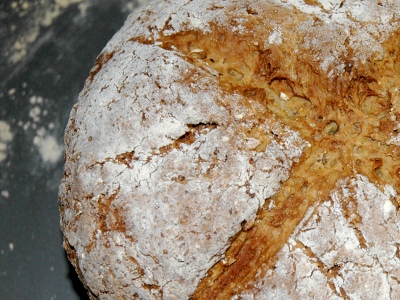
Both the sourdough and slow rise breads are great but do require a lengthy wait and need to be somewhere warm for the duration (which isn’t always possible in our house). Soda bread is our favourite “need bread now” bread as it’s ready within the hour. It doesn’t need any kneading or a warm rising/resting environment either – just mix the ingredients together and bung it in the oven. I wouldn’t go as far to say it’s an acquired taste but it certainly does have an unusual flavour – not really a bread for sandwiches but great for with a hearty winter soup or with jam for a sweet treat. [Our soda bread recipe]
Pros:
- Super quick!
- Takes less than five minutes to mix – no kneading!
- Ready to eat within the hour
- No yeast so no need to keep it warm during rising/proving
- A light crumb with a sweet, soda-y taste
Cons:
- The taste is a little unusual – delicious once you’re used to it though
- Need to have more exotic ingredients that the others (milk! ;) )
- Not as long lasting as the other breads (eat within 2 days)
So those are our three favourite real breads – what are yours? Do you bake bread regularly? Do you use a bread maker?
Read MoreMeal planning: our lunches & dinners this week
We’re not very good a meal planning. We usually manage it for the three or four days following our monthly big trip to the supermarket. I know they’re a really good idea – saving money, reducing food waste etc – but we’re quite quite rubbish at anything that involves personal organisation.
Often we’ll not even think about what we want for dinner until it’s already 8pm and we’re both blood-sugar crashing. When that happens we’re more likely to turn to ordering take-in or running to the (nearby, expensive) shop for something quick – which invariably means buying something junky for dinner and spending extra money because we’re hungry and everything looks sooooo good.
Our lunches are the same – we usually don’t think about them until we need to eat and they have to be ready quickly so we can take the dog out and get back to work in good time. Lunches are a lot cheaper for us now we both work from home than they were when we were similar disorganised and worked in offices – but they rely on what we’ve got in or another trip to the expensive shop. And I think they generate the bulk of our food waste – loaves bought in or made for lunches and not finished before they go stale etc.
So here we go – my first attempt at a week’s meal plan:
Monday lunch – boiled eggs & toast (I had food poisoning or a tummy bug over the weekend and am still feeling a little delicate. This is our favourite poorly tummy food)
Monday dinner – pasta with herby sausages & peppers in a tomato sauce
Tuesday lunch – spicy butternut squash soup (to be made this evening) with bread (which will need buying/making), & cheese
Tuesday dinner – spicy sausage & lentil casserole (the last of the sausages that need using up) with veg
Wednesday lunch – more spicy butternut squash soup with bread & cheese
Wednesday dinner – a difficult meal slot as I’m out until 10pm – keema achar curry (made by John last week, now in the freezer) either with rice or chapattis & naan (depending if he can be bothered making them fresh)
Thursday lunch – John will probably be out so probably just more soup & bread for me
Thursday dinner – leftover sausage & lentil casserole and veg (will need to buy something green)
Friday lunch – our random version of a ploughman’s lunch with samosas (from the petrol station … yes! I know! but strangely they’re some of the best samosas we’ve ever eaten and only 60p each!) and pickles
Friday dinner – homemade pizza – tuna & chilli, and chorizo & peppers (need to buy mozzarella)
Saturday brunch – scrambled eggs & muffins/crumpets (to buy, whichever are on offer)
Saturday dinner – spicy marinaded chicken pieces (need to buy the chicken) & rice
Right, let’s see how much we stick to it!
Read MoreThe wonder that is slow rise bread
Slow rise bread is awesome and here’s my top five reasons why.
1. Slow rise bread is really easy and, waiting aside, quick to make.
While it usually takes about 18 hours from start to finish so requires plenty of forethought if you want it for a particular meal, it only takes about 5-10 minutes of actual involvement and for me, most of that time is cleaning my mixing bowl because I’m too disorganised to do that in advance. That’s less time than it takes us to walk to the shop and back.
2. Slow rise bread tastes great.
The bread produced is not like the super fluffy, disturbingly even stuff from supermarkets; it’s heavier, chewier and the bubbles are bigger and more random. This makes it feel considerably more substantial and less like candy floss. You don’t need to eat as much to feel full.
3. Slow rise bread lasts longer than shop-bought bread.
Probably because of the heavier, chewier texture, it doesn’t feel stale anywhere near as fast as supermarket bread. Fresh-baked (rather than pre-packed) supermarket bread always seems to dry out really quickly and by the second day, needs heating in the oven/toasting to be enjoyable. Our slow rise bread is still good to eat on day three or four (although it rarely lasts that long). We waste far less bread/bread products these days.
4. Slow rise bread is cheap to make.
A loaf of the “fancy” stuff from the bread counter in a supermarket usually costs £1-ish — or more if you get their version of an artisan loaf. Even using reasonably fancy flour, my loaves cost about 30p (excluding energy for baking). I suspect I could push this down quite a lot by buying in bulk.
5. Slow rise bread saves money in other ways.
But more than just the cost of the loaf itself, we’ve saved loads of money not going to the supermarket every other day to pick up fresh bread. Because when we were there, we never just brought the bread – we’d pick up other bits and bobs, most of which were treats or other unnecessary purchases.
Easy, tasty & frugal – really, what more could you want from a loaf?
My No Knead, Slow Rise Bread Recipe
Busy Sunday
Today, I’ve:
- Built a cold-smoking cabinet/mini-smoke house
- Cursed the sun because just as I finished the latter, it came out and made it too hot to cold smoke cheese without it melting all over the place
- Cleaned out the chicken coop
- Hung out a load of washing, which, of course, caused the sun to go in
- Jumped for joy because the lack of sun meant I could start smoking
- Started smoking three types of cheese (more on this in another post)



